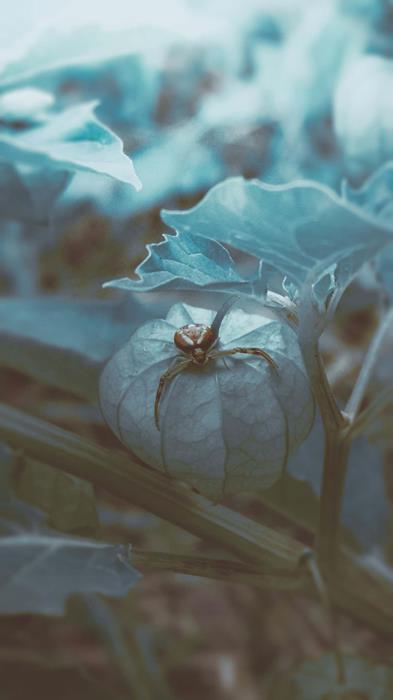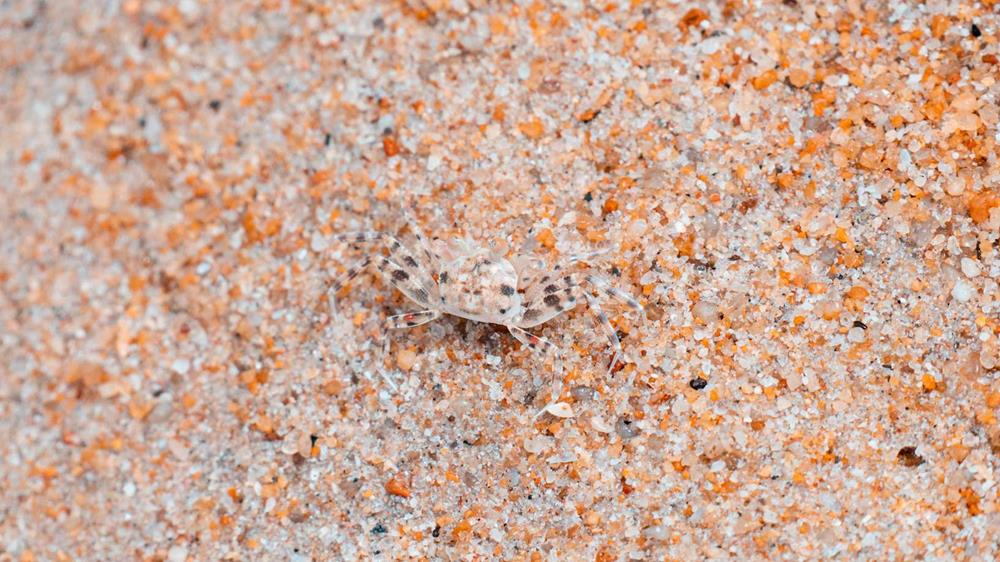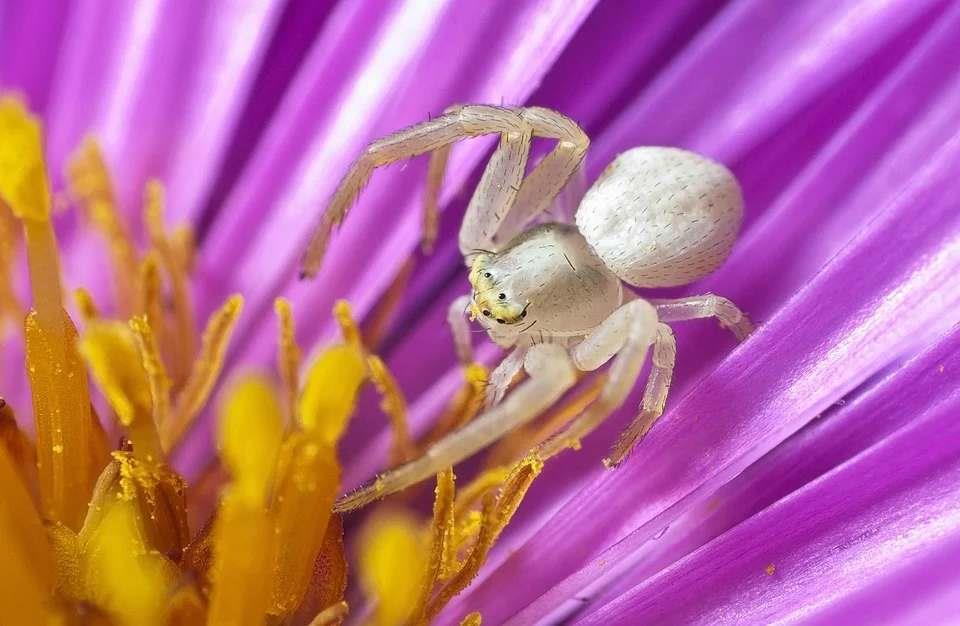The animal kingdom is full of surprises, and the Bird Dung Crab Spider (Thomisus onustus) stands out as a master of disguise. This small but fascinating creature has developed a remarkable strategy to blend into its surroundings, not by mimicking leaves or bark, but by resembling something far less appealing: bird droppings. This unique form of mimicry not only helps it avoid predators but also turns it into a stealthy predator itself.
The Art of Camouflage
Camouflage plays a critical role in the survival of many species, and spiders are no exception. For the Bird Dung Crab Spider (Phrynarachne ceylonica), the art of camouflage is taken to an extraordinary level. By adopting the look of bird droppings, it cleverly deceives both its prey and predators. This strategy showcases the incredible lengths to which nature will go to ensure the survival of its creatures. The ability of these spiders to blend in so seamlessly with their environment highlights the intricate relationships between predators and prey in the natural world.
Getting to Know the Bird Dung Crab Spider
A Master of Disguise
The Bird Dung Crab Spider, a small yet captivating creature, has perfected the art of staying under the radar. With its body mimicking the appearance of bird droppings, this spider has turned camouflage into an art form. This unique adaptation allows it to blend seamlessly into its surroundings, making it nearly invisible to both predators and prey.
Where Does It Live?
This ingenious spider prefers the warmth and shelter of leafy environments. Gardens, forests, and meadows are its playgrounds, where it thrives among flowers and greenery. Its choice of habitat is no accident; these areas are frequented by the insects it preys on, making them perfect hunting grounds.
A Day in the Life
The Bird Dung Crab Spider is not your typical web spinner. Instead of catching its meals in a web, it opts for a more hands-on approach. This spider waits patiently, disguised among the foliage, for unsuspecting insects to come close. With precision and speed, it grabs its prey, demonstrating its prowess as an ambush predator.
On the Menu
The diet of the Bird Dung Crab Spider is as varied as the insect world itself. It primarily feeds on nectar-seeking insects, such as bees and butterflies. This diet makes flower-rich habitats ideal for this spider, as these areas attract a wide variety of potential meals.
The Camouflage Mechanism of the Bird Dung Crab Spider

The Art of Looking Like Bird Droppings
The Bird Dung Crab Spider has taken the concept of “hiding in plain sight” to a whole new level. This tiny creature’s ability to mimic bird droppings is nothing short of astonishing. But how does it pull off such a convincing disguise? The secret lies in its physical attributes and behavior.
Physical Attributes for Perfect Camouflage
Firstly, the color of this spider plays a crucial role. Its body is a mix of white, gray, and sometimes brownish spots, closely resembling the coloration of bird droppings. This color scheme is complemented by its shape and texture. The spider’s body is not only rounded, mimicking the splatter of droppings, but it also possesses a certain roughness, adding to the overall illusion.
Behavioral Adaptations that Seal the Deal
However, looking the part is just one aspect of its strategy. The Bird Dung Crab Spider also behaves in a way that enhances its camouflage. It adopts a very still, unassuming posture when resting on leaves or flowers, making it even harder to distinguish from real droppings. This stillness is crucial, as movement would give away its presence to both predators and prey.
Additionally, the spider positions itself in areas where bird droppings are expected, such as under trees or on leaves, further convincing its onlookers of its authenticity. This combination of physical and behavioral adaptations makes the Bird Dung Crab Spider a master of disguise, enabling it to evade predators and ambush prey with remarkable efficiency.
Advantages of Camouflage for the Bird Dung Crab Spider

Protection from Predators
One of the most significant benefits of the Bird Dung Crab Spider’s unique camouflage is its enhanced protection from predators. By mimicking bird droppings, the spider becomes virtually invisible not just to the human eye but more importantly, to potential predators. Birds and larger insects, which might otherwise pose a threat, often overlook the spider, mistaking it for waste rather than a meal. This clever disguise allows the spider to inhabit its preferred environments with a reduced risk of predation, illustrating nature’s ingenuity in ensuring the survival of its creatures.
Enhanced Predatory Efficiency
The camouflage does more than just protect the spider from becoming someone else’s dinner; it also turns it into an efficient predator. The Bird Dung Crab Spider’s resemblance to bird droppings enables it to ambush its prey with incredible efficiency. Insects, particularly those attracted to the nectar of flowers where the spider waits, do not perceive it as a threat. As a result, the spider can wait patiently, conserving energy until the perfect moment to strike. This method of ambush predation highlights the spider’s strategic use of its camouflage, turning its defense mechanism into an offensive tool.
The Bird Dung Crab Spider vs. Flower Crab Spiders

While the Bird Dung Crab Spider employs a unique strategy by mimicking bird droppings, it’s not the only spider with a knack for camouflage. Take, for example, the flower crab spiders. These spiders can change their color to match the flowers they inhabit, a process that can take a few days. This color change allows them to blend into their floral surroundings seamlessly, making them invisible to both prey and predators. Unlike the bird dung crab spider, which relies on a static form of mimicry, flower crab spiders adapt their appearance based on their current environment.
The Spectrum of Spider Camouflage Strategies
The diversity of camouflage strategies among spiders is a fascinating display of evolutionary innovation. From the bird dung crab spider’s static mimicry to the dynamic color-changing abilities of flower crab spiders, these strategies demonstrate the various paths evolution has taken to solve the problem of survival. Each strategy reflects a deep adaptation to their specific environmental challenges and predatory pressures.
Evolutionary Implications
The variety of camouflage techniques found in spiders points to a complex evolutionary arms race between predators and prey. As predators become more adept at spotting their prey, the prey, in turn, develops more sophisticated methods of concealment. This constant push and pull have led to the incredible diversity of life forms and survival strategies we see today. The bird dung crab spider and flower crab spiders are just two examples of how life can adapt in the most unexpected ways to ensure survival.
Conclusion: The Marvel of Camouflage
The Bird Dung Crab Spider represents a remarkable feat of natural mimicry, demonstrating the lengths to which evolution can go to ensure an organism’s survival. By adopting the appearance of bird droppings, this spider has developed a unique camouflage strategy that serves both as a shield against predators and as a stealthy method to capture prey. This dual advantage underscores the critical role of camouflage in the life of not just the spider but many creatures in the wild.
Camouflage, as illustrated by this spider and others like the flower crab spiders, highlights the dynamic relationship between organisms and their environments. These survival strategies are not static; they are the result of millions of years of evolution, shaped by the continuous interaction between predators and prey.
The Bird Dung Crab Spider, with its unassuming yet ingenious survival tactic, reminds us of the complexity and wonder of nature. It stands as a vivid example of how life finds a way to flourish, even under the most unlikely guises.

